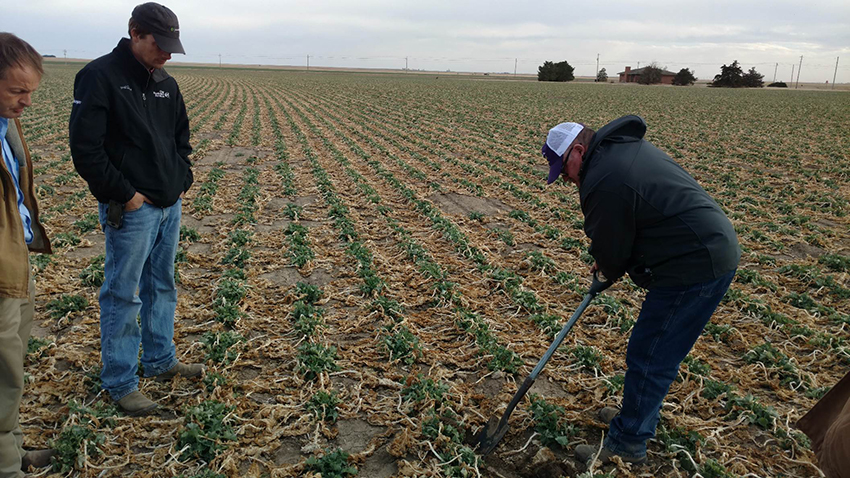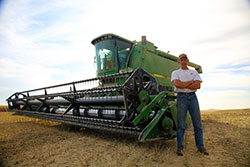|
“The little B with a big
attitude.”
The testosterone equivalent of
plant reproduction needs.
After a good review with an experienced Spring Canola
Grower, Marty Jespersen at Taber, Alberta.
The soil mobile, micronutrient, Boron is under review for a
recommendation with TAPPS and TAPPKTS.
Boron is important for top yields and Winter Canola’s long bloom
period.
Winter Canola can bloom for up to 8 weeks at heights of 90 to 96
inches in the PNW and 3 to 4 weeks for Spring Canola.

Boron foliar applied on Spring Canola is very
tricky and not repeatable as reported by this top Alberta producer.
The Spring Canola crop is growth stage critical….right at the bud
and prior to bloom, a 24 hour period if the stand would allow this
typical window.
This means the Foliar Applied Boron is too intense for most
managers and very expensive to apply as a single product.
Foliar Boron is probably not viable on dryland winter Canola. The
bloom period is so variable at the start due to north facing slopes,
hilltops and poor fall start areas on dryland level ground of the
Great Plains.
It is difficult to use fungicides in the same sprayer pass with
Boron.
Foliar applied Boron becomes Snake Oil in the eye of
the producer due to poor timing and poor geometry of the
critical nutrient.

The superior way to apply Boron is in the 7 inch
deep TAPPS band. A uniform band at 1% CV. A true homogenous blend
with N,P,K,S, Zn, Cu with exceptional root targeting.
The rate must be very low due to the high crop availability of the
TAPPS band.
Boron is toxic to future crops like wheat and corn if the Boron
application rate is too high.
On high pH soils 7.5 to 8.5 pH and under irrigation Boron is very
important….in Corn, Wheat and Canola. Also minor crops.
Coarse textured soils also need Boron every year unless Manure is
being applied and the OM is at 3% or greater.
With Exactrix, The Micronutrient Boron can be used and is
recommended in all field acres no matter what the crop is with OM
under 2%. A Boron rate at about 1/8 pound to .25 pounds per acre
will allow VRT-Site Specific Applications in 2X applications.
The maximum rate is .25 lbs. per acre in the TAPPS band unless
Alfalfa is the crop in production.


The TAPPS banded Boron cost should be no more
than $1.00 to $2.00 per acre under current economic structure.
Spend no more.
Boron is not soil stable. It is a mobile nutrient like Nitrogen,
Sulfur, and Chlorine. Highly variable soils such as found in
southwestern Kansas has great potential to respond to Boron.
Windblown dust bowl soils and leveled land should have Boron in the
TAPPS mix. Steep Palouse Soils have such high variability no manure
history that Boron must be used.
Less is absolutely More with Boron and Exactrix. 1/8 pound per acre
should do it on 15 inch band centers. Every Acre, Ever Year.
The timing problem is resolved with TAPPS application…..and Boron
should be in the mix on every crop on high pH.
Zinc and Copper are also required with the Boron application on high
pH soils to improve N uptake and to properly assimilate amino acids
which allows for greater oil content and protein.

TAPPS in Cotton Rotation with Corn. Uniformity in
high pH soils of 7.5 to 8.5 pH.
The timing of TAPPS is critical to make Boron work. Corn and Cotton
respond to Boron.

Combining the Little B with the Big C and you get
a healthy plant and ready for the reproductive stage.

Feb. 27, 17, Hugoton Gas Field, Exactrix TAPPS
with Exactrix Mustang Openers on 20 inch centers side dressing
Rubisco Hornet Winter Canola.
Timing of TAPPS with Boron, Zn and Cu is influenced by the need of
the crop.
Banding Boron with TAPPS ahead of the canola plant need assures good
timing of the uptake across the entire field virtually the same day.
Banding deep to 7 inches assures expensive place nutrients are in
good moisture for the rooting colony.
True deep banding without tillage allows roots to recover quickly
and colonize in the micronutrients and macronutrients.

Boron may be limiting in reproductionfor proper
development of the corn ear. Adequate Boron is a pathway to top
yields in the 270 to 325 bushel per acre range.
Manure is a good source of Boron. High OM is a good indicator of
adequate Boron. Neutral 6.5 to 7.5 pH soils most likely require very
little Boron with OM at 3%.

Boron is key in reproduction. In fact Boron is
often the limiting factor in Alfalfa and Canola.

Poor fall stands of Winter Canola result in a management problem.
November 2016, Hamilton Road, St.John, Washington.
In the future the timing of qualified PGR’s or Spring applications
of Fungicides will not be possible.
The Stand of Winter Canola must be 99% emerged in 4 to 5 days of
seeding at high soil temperatures (80* to 100*F) using Water
Injection.
Foliar applied Boron is money down the drain since Foliar Boron is
so timing critical to the growth stage of the canola bud.

Stand Quality in the moderate winter climates of
Lohn, Texas. March 5, 2017.
A management challenge.
A Poor fall start?
Is No-tillage in play?
Could be a loss of seedbed from tillage?
Probably no TAPPS program?
Could be frost damage?
Wrong variety selected?, and many other problems that need to be
identified.

Budding of Winter Canola. Varies across the field
at Lohn, Texas March 5, 2017.

Hugoton, KS, Feb. 28, 17. An 85% stand of Winter Canola without
water injection. Boron is required in this good dryland field. Light
texture to sandy soil with 1% OM requires micronutrients or manure.
The stand is good? About as a good as it gets in No-tillage
Chemfallow production.
The next step is 99% stands. This requires help from the planter and
water injection in the row at 75 gallons per acre on 20 inch to 50
gallons per acre of 30 inch.

Primary Nitrogen, Uniformly applied at reduced rates assures a
great margin with Exactrix, About 12% to 25% more net margin. “It
Works Every Time.”
|

















